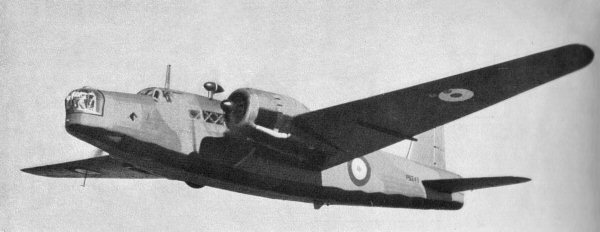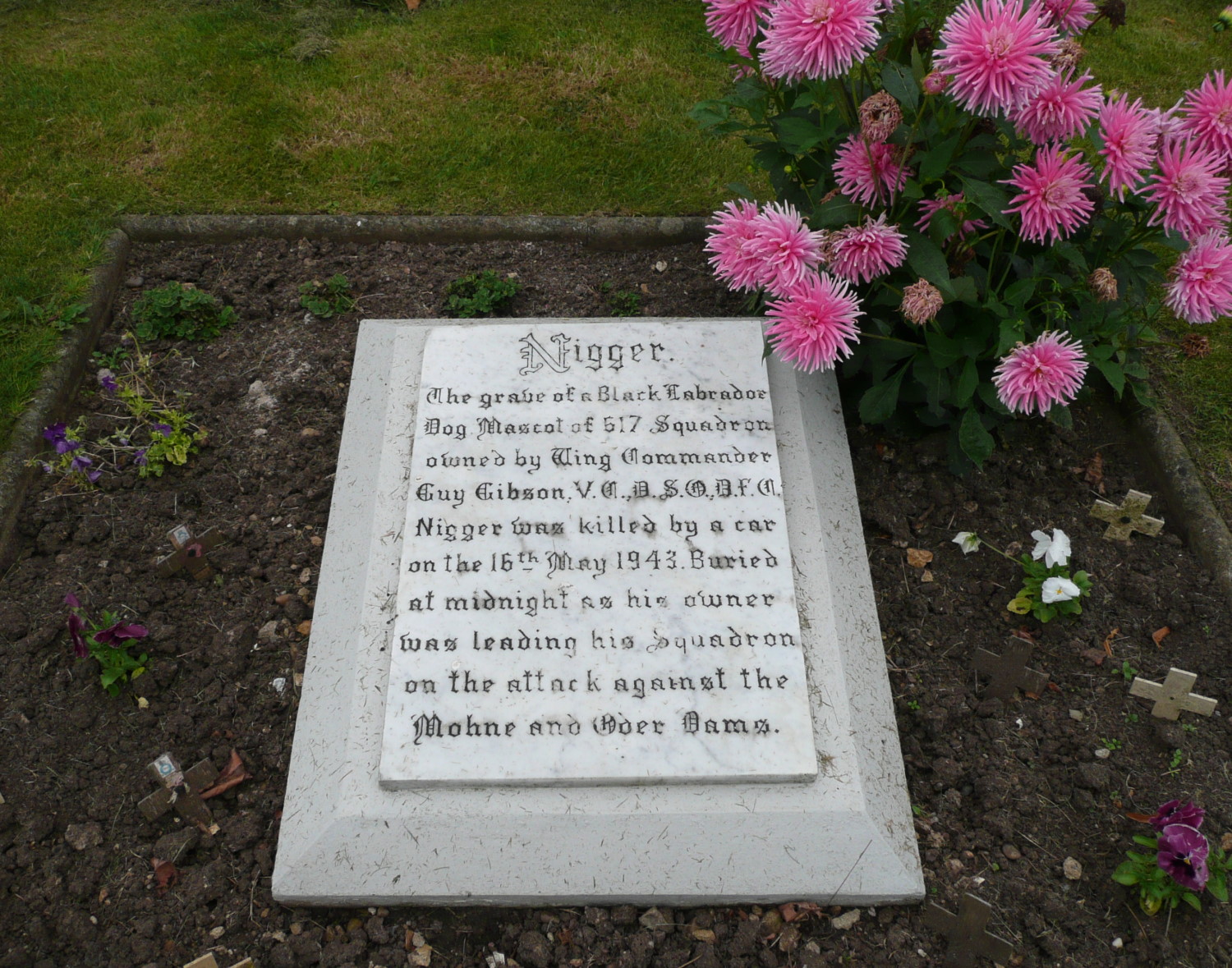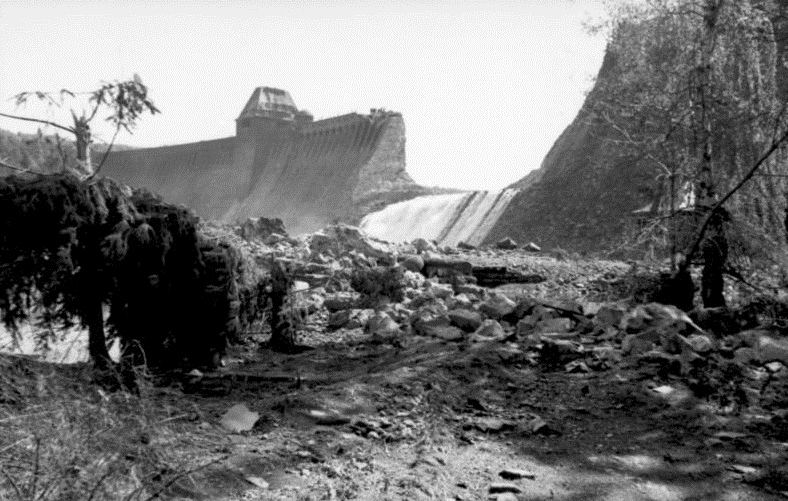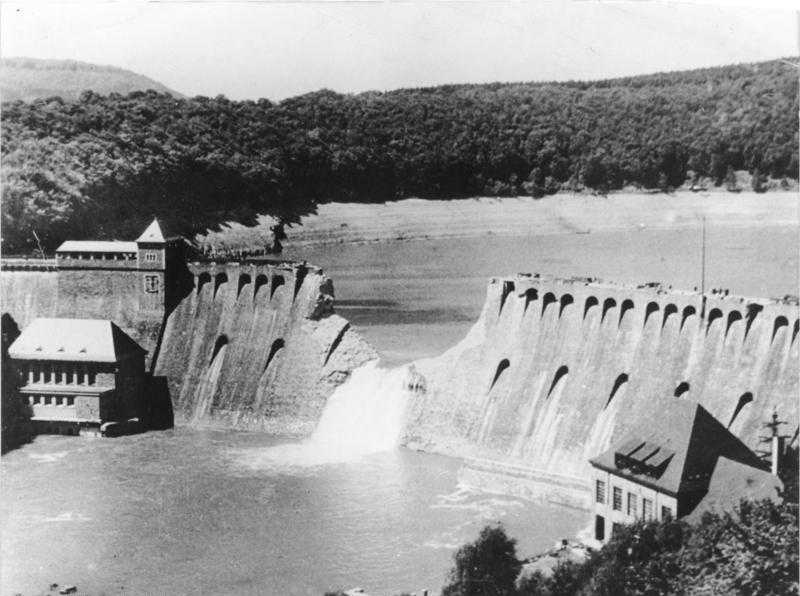The Second World War is full of fascinating stories and amazing people, from Winston Churchill, who was known for occasionally wandering through his country house of Chartwell completely naked, to Franklin D. Roosevelt, who required leg-braces and a pair of walking-sticks to stand up, from the Blitz, to the V2-rocket that blew up the police-station down the road from the Stewart family home in Highgate, London, when a newborn boy named Roderick came into the world.
But these stories, fascinating as they are, probably couldn’t hold a candle to the story of two men. One with an amazingly good brain, and one with balls of solid brass: Sir Barnes Neville Wallis and Wing Commander Guy P. Gibson (who had so many military decorations after his name that I shan’t list them here!).
Between the two of them, Wallis and Gibson, they solved one of the biggest problems and carried out one of the most famous aerial attacks on Germany during the entire Second World War which became a massive morale-booster to the Allies and a huge loss to the Germans. This mission of theirs, the rather appropriately-named “Operation Chastise” aimed to destroy the German hydroelectric dams in the Ruhr Valley, thereby cutting electrical power to the steel-production plants in the area and severely crippling the German war-effort.
This is the story of the Dam Busters and the famous Bouncing Bomb.
Target: The Ruhr Valley
During the Second World War, the Ruhr Valley was the heartland of the German war-machine. The valley area was dammed by the Germans and vast amounts of hydroelectricity was generated there, which was used to power the factories that manufactured shells, tanks, bombs, high explosives and airplanes with which the Germans were fighting their war of occupation and oppression against the rest of Europe.
The munitions factories in the Ruhr Valley area were a huge headache to the Allies. Despite repeated raids on the Valley, they had failed to put the factories out of action; the main method of aerial attack: Saturation carpet-bombing, just wasn’t accurate enough to destroy the factories. The Allies desperately needed to find another way to try and stab at the heart of the German military production-area.
Instead of attacking the factories, the Allies considered attacking the huge hydroelectric dams in the area. If they could successfully destroy the dams, the loss of electrical power would delay German munitions production for months, not to mention that the huge waves of water released from theh collapsing dams would probably wipe out every single factory in the immediate area. Unfortunately, with conventional bombing and all other conventional methods of attack, this was quite hopeless. The dams were protected by anti-aircraft guns, huge floating booms and underwater torpedo nets that made destroying the dams nearly impossible. The booms prevented the possibility of floating a sea-mine against the dam walls, the torpedo-nets meant that attacking the dams with torpedo-planes was a waste of time and the sheer inaccuracy of carpet-bombing meant that it was useless to try and destroy the dams by pounding them into submission by aerial bombardment. They needed a whole new and ingenious way to destroy the dams.
Enter Sir Barnes Wallis.
Barnes Wallis and the Bouncing Bomb
Enter Sir Barnes Wallis. Or Dr. Wallis, as he was called then. Barnes Wallis fitted almost all the stereotypes of your perfect mad scientist. By the 1940s he was already in his fifties. He was a brilliant scientist, engineer and a fantastical inventor, which is just as well, because this article wouldn’t be here without one of his most wonderful inventions: The Bouncing Bomb.
Wallis’s contributions to the Second World War were considerable. Before the Bouncing Bomb, Wallis was famous for helping to design the legendary Wellington Bomber.

The Wellington was one of the Allies most famous bomber-planes and they were used for bombing-raids with varying frequency throughout the entire duration of the Second World War. But it pales into insignificance, some might say, when compared to Wallis’s most daring and some might say, outrageous invention ever.
In studying the huge German hydroelectric dams in the Ruhr Valley, Dr. Wallis determined that to destroy the dams with conventional bombing, they would require bombs so powerful that no heavy bomber then in use would ever be able to transport them to Germany. It was a waste of time to even try. Wallis determined that if a regular bomb was detonated right against the base of the dam, the force of the blast would rip the dam apart. But many people thought that Wallis was dreaming. And maybe he was. Because to many people, this seemed a total impossibility; bombing-accuracy had not yet reached such a level that they could drop one regular-sized bomb with such a nicety that it would land right against the dam wall, sink and then detonate under water to destroy the dams. If Wallis wanted this hare-brained idea of his to work, he would have to figure out a way of delivering the bomb right up against the dam, something that nobody had figured out yet, but Wallis was determined to try.
Inventing the Bouncing Bomb
The challenges facing Dr. Wallis were immense. Although he had proven that a current-production high-explosive bomb detonated at the base of the dam walls would be sufficient to breech the dam and cause significant damage to the German industrial Ruhr Valley, he had to find a way to deliver the bomb to the dam in such a precise way so that the bomb would explode right against the wall of the dam. A distance-error of even a few feet would mean that the entire mission would fail, because when the bomb detonated, any cushion of water between the explosion and the dam would absorb the shock of the blast, rendering the bomb harmless and the entire mission a waste of time.
Eventually, Wallis got the idea that he could get a bomb right up against the wall of a dam if he skipped it across the lake behind the dam, like an enormous, high-explosive pebble. Such a technique was used by the Royal Navy during the Napoleonic Wars, whereby gun-crews would fire their cannonballs at the waterline and watch them skip across the surface of the sea, a technique that vastly increased the range of their cannonfire before the balls finally hit the enemy ships, smashing into their hulls close to the waterline, causing them to sink. Using a similar technique, Wallis hoped that he could smash a hole through the German dams. Although he had now hit upon a possible method for getting the bombs close enough to the dams to destroy them, he still had to figure out how to get the bombs to bounce across the water like skipping-stones.
It was 1941 when Dr. Wallis started working on his new bomb. It took a lot of trial and error and countless hours of experimentation, measurements and testing. There were a huge number of obstacles to overcome. And if you don’t believe me, here they are:
– The bomb had to skip across the water. Not easy for a chunk of metal that weighs several tons.
– The bomb had to dropped from a precise height above the water from a precise distance from the target. Difficult when GPS hadn’t been invented.
– The bomb had to hit the dam wall at exactly the right time. If the bomb fell short, it would detonate in the water and prove useless. If it missed the target, it would explode on top of the dam and kill everyone in the bomber flying overhead.
The first of these great challenges was how to make the bomb skip across the water. Eventually, Wallis came up with the idea that the bomb would have to be a large cylinder suspended under the belly of the aircraft and provided with a means of producing backspin before the bomb hit the water, to prevent it from going where the bomber-crews didn’t want it to.

One of the actual ‘bouncing bombs’
Apart from figuring out the right shape of the bomb so that it would skip across the water and giving it backspin so that the bomb would bounce along the water and give it the height it needed to complete its journey, Dr. Wallis still had to figure out how high off the water the bomb had to be dropped and how far away from the dams they had to be released. Amazingly, these two problems weren’t solved by Dr. Wallis, but by the other man in this story.
A fellow named Guy Gibson. Wing Commander in the Royal Air Force. Gibson was an intelligent, brave and courageous fellow. If you don’t believe me, let’s have a look at his awards:
Victoria Cross.
Distinguished Service Order + Bar.
Distinguished Flying Cross + Bar.
Legion of Merit.
He didn’t win all those medals for nothing.
Gibson and his men were trying to figure out how to determine the height of their planes above the water before they dropped their bombs. The problem was, they had to be just sixty feet above the water. Their altimeters (the instruments that determined a plane’s altitude) just didn’t function at such low levels. Their solution came, reportedly, when they were out on the town. While the airmen were watching a theater-performance, they noticed how a pair of spotlights at either end of the stage met at a specific point on the stage-platform. They figured out that if they fixed two spotlamps on the noses and tails of their planes and angled them correctly, the lights would meet at the precise moment that the plane was sixty feet above the water.
The boys also figured out how to determine the distance from the dam using a similar method.
Each of the German dams had tall towers at each end. By using a cheap, homemade bomb-sight, the bomber could hold the bomb-sight in front of his eyes and keep them trained on two little upright sticks at the end of the sight. When the two sticks lined up with the two towers on each of the dams, they knew that they were dropping-distance from the dam and could release their bombs and then fly away.
Preparing for Battle
The attack on the German dams in the Ruhr Valley was called “Operation Chastise”, probably because by successful completion of this mission, the Allies hoped to severely cripple Germany’s muntions productivity. But the whole mission was almost scuttled before it began.
It took Barnes Wallis months to figure out how to get everything just right for his new bombs to work. And even then a lot of the success was totally up to luck. The bombs would only be as accurate as the crews that launched them. If everything worked perfectly, then the bombs would be dropped into the lakes. They would skip across the water like huge pebbles, bouncing over the torpedo-nets and the floating booms and then strike the side of the dam walls. Here, they would sink right down to the bottom of the dam. Each bouncing bomb was fitted with a hydrostatic charge which went off when the bombs were under a specific depth of water (the same charges are used to detonate naval depth-charges for destroying submarines). The force of the explosions would bounce off the water and be directed completely towards the dam walls. The shockwaves would cause the walls to crumble and for the dams to be breeched, crippling their hydroelectrical generating abilities. But this was only if everything went perfectly.
While Wallis tackled with these problems, RAF Bomber Command realised that they would need a really spectacular bomber squadron to carry out this insane mission. Training just any old squadron to execute this mission wasn’t deemed sufficient enough. A whole new squadron would have to be formed; a squadron manned by the best of the best of the best bomber pilots, navigators, wireless-transmitters, gunners and bombers in the entire Royal Air Force. Commanding this squadron was Wing Commander Guy Gibson.
The squadron, #617, was made up of men who were all specifically chosen for their particular skills, whether it was low flying, navigation, defensive gunnery, bomb-aiming or communications. The squadron was formed on the 21st of March, 1943 and was made up of airmen from almost every allied airforce imaginable. The RAF, the RAAF (Royal Australian Air Force), RCAF (Royal Canadian Air Force) and the RNZAF (Royal New Zealand Air Force). Rather appropriately, the squadron’s motto is “After me, the flood”, alluding to what they hoped to do to the Germans.
The Story of Nigger
Up to now, I have mentioned everything. The men, the machines, the technology, the mission and its aims. I haven’t, however, mentioned Nigger.
‘Nigger’ was the mascot of 617 Squadron. He was a labrador (hence the name ‘Nigger’) and the pet of Wing Commander Gibson. Beloved by Gibson and his fellow pilots, he was sadly killed on the evening before the raid. He was run over by a car at the airbase. He was buried outside of Gibson’s office on the night of the raid.

The men of 617 Squadron with Nigger. His owner and the sqaudron’s commanding officer, Guy Gibson, is first on the right on the bottom row, with the pipe in his mouth
On the night of the raid, ‘Nigger’ was one of the code-words used to signal a successful breech of one of the dams. Below is a photograph of Nigger’s grave:

“NIGGER – The grave of a black labrador dog; mascot of 617 Squadron, owned by Wing Commander Guy Gibson, VC, DSO, DFC. Nigger was killed by a car on the 16th of May 1943. Buried at midnight as his owner was leading his squadron on the attack against the Mohne and Eder Dams”
Busting the Dams
Despite the death of their mascot and favourite pup, the men of 617 Squadron were determined to go through with the mission. It would take more than a careless driver running over their pet pooch to stop these men.
The dam busters took off on the night of the 16th-17th of May, 1943. May was the month when the height of water in the dams was at its highest and destroying the dams would have the most devastating effect on the Germans. The Squadron was divided into three groups or formations. The first formation had nine planes and the second and third formations had five planes each. They flew southeast towards Germany, doing their best to avoid known German anti-aircraft gun-batteries.
The mission was almost a failure. The three formations encountered heavy anti-aircraft fire on their ways to and from their targets; and the dams themselves were heavily defended by anit-aircraft guns. Of the three main dams that were to be breeched, the Mohne, the Eder and the Sorpe, only the Mohne and Eder were successfully destroyed.

The Mohne Dam after the attack
Attempts to destroy the Sorpe Dam were unsuccessful, and the squadron was already encountering heavy anti-aircraft fire and were unable to hang around and try again. Three attempts in all were made to destroy it but even though the bouncing bombs hit the dam, they didn’t manage to destroy it.

The Eder Dam after the attack
After the Attacks
Although the mission was called a ‘success’, it was one that was paid for with a heavy price. Eight of the nineteen planes were shot down or crashed during the mission. The emotional toll on Barnes Wallis was immense and after the war, he became increasingly interested in remote-controlled aircraft, hoping that aerial wars of the future could be fought without the need for young pilots to die in combat. The effect of the destruction of the dams was immense. If nothing else, their destruction was a huge morale boost to the Allies. The water released from the two destroyed dams flooded out dozens of factories, storage-houses, munitions plants, it distrupted electrical generation and even destroyed German food-production, by flooding farmlands and ruining their crops!
Despite the destruction and death and the disruption caused by the breeching of the dams, the military aims of the dam-busters raid were barely fulfilled. It was hoped that knocking out the dams would cripple the Germans for months. Instead, they were out of action for only a few weeks. The dams were repaired, the factories were put back into operation and soon it was as if nothing had happened. Although a disappointment to the Allied top brass, the morale-boost it gave to the British was something that the Germans couldn’t try and modify.
Sir Barnes Wallis died on the 30th of October, 1979. He was ninety-two.
Wing Commander Guy Gibson was killed in action on the 19th of September, 1944. He was twenty-six years old.
I’m doing a research paper on the fall of Singapore in 1942 and I do want to point out that the possibility of land invasion was considered by British Military commanders. They had even prepared operation matador in the event of such a land invasions. However, the resources and determination to carry it out were not met and 1942 was a bad year for the British in terms of the Luftwaffe hammering the British homeland.
Hope this improves your awesome account of it all.
I know that the British had contemplated a land-invasion, but they were more concerned about an invasion by sea. The land-invasion was always a secondary concern.
I’m doing a research paper on the fall of Singapore in 1942 and I do want to point out that the possibility of land invasion was considered by British Military commanders. They had even prepared operation matador in the event of such a land invasions. However, the resources and determination to carry it out were not met and 1942 was a bad year for the British in terms of the Luftwaffe hammering the British homeland.
Hope this improves your awesome account of it all.
I know that the British had contemplated a land-invasion, but they were more concerned about an invasion by sea. The land-invasion was always a secondary concern.